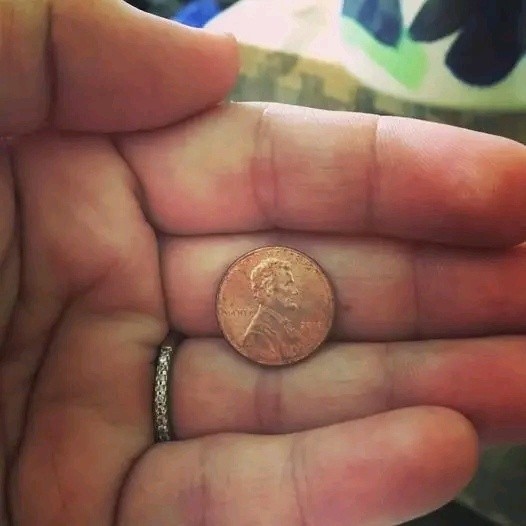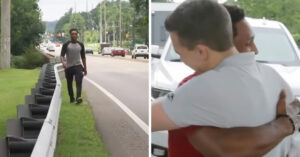As parents, we often strive to teach our children the value of money, generosity, and the importance of thinking about others. But sometimes, it’s the kids themselves who surprise us with their understanding of these concepts, even in the simplest of ways. One such moment happened when my 7-year-old son, Marcus, handed me a penny and made a suggestion that left me both amused and reflective. This is a story about how a tiny coin can carry a big lesson and how we can nurture these qualities in our children.
The Penny That Sparked a Thought: It was an ordinary day when Marcus walked up to me, holding a penny in his small hand. With a serious expression, he handed it over and said, “Here, Mom. Go get something useful.” Amused, I asked him what he thought would be the most useful thing I could get with a penny. Without missing a beat, Marcus replied, “Mom, I think it’d be best if you bought pizza. Pizza would bring world peace. Everyone loves pizza. If we could all just sit down and eat pizza together, the world would be a lot happier of a place.”
In that moment, I was caught between laughter and a deep sense of awe at my son’s simplicity and wisdom. A penny, to him, wasn’t just a coin—it was a means to spread happiness and bring people together.
Teaching Value Beyond the Monetary: Marcus’s suggestion was a reminder that the value of something isn’t always tied to its monetary worth. For children, the concept of money is often abstract. What matters more to them is the impact that their actions or possessions can have on the world around them. When Marcus handed me that penny, he wasn’t thinking about what it could buy; he was thinking about how it could make people happy.
This perspective offers a valuable lesson for parents: it’s important to teach our children that generosity and kindness are priceless, regardless of the size of the gift. Whether it’s a penny, a toy, or a simple act of kindness, the intention behind the gesture is what truly counts.
Encouraging Generosity in Everyday Life: As parents, we can encourage this mindset by involving our children in acts of giving and sharing. Here are some practical ways to nurture generosity and an understanding of value in your child’s everyday life:
- Lead by Example:
- Children learn by watching us. Show them how to give, whether it’s donating to a charity, helping a neighbor, or simply sharing a meal with someone in need. Explain the impact of these actions, emphasizing the joy it brings to others.
- Create Opportunities for Giving:
- Encourage your child to set aside a portion of their allowance or savings for a good cause. It could be a charity they care about, a classmate in need, or even a family member. Let them decide how they want to give and involve them in the process.
- Talk About Value, Not Just Price:
- When discussing money with your child, focus on the value and impact of their spending, rather than just the cost. For example, talk about how buying a meal for someone can be more valuable than buying a new toy.
- Praise Thoughtful Actions:
- When your child shows generosity or kindness, acknowledge and praise it. Let them know that their actions, no matter how small, make a difference.
- Make Giving Fun:
- Turn acts of generosity into a fun activity. For example, you can create a “giving jar” where your child can drop coins or small notes about what they’d like to give or do for others.
The Power of Small Gestures: Marcus’s suggestion of buying pizza with a penny was a small gesture with a big heart. It served as a reminder that even the tiniest actions can have a significant impact. In a world often focused on material wealth, it’s important to instill in our children the belief that kindness, generosity, and the thought behind a gift are what truly matter.
Conclusion: As parents, we have the unique opportunity to shape our children’s understanding of value and generosity. By encouraging them to see beyond the monetary worth of things, we can help them grow into compassionate, thoughtful individuals who understand the true power of giving. Whether it’s a penny, a smile, or a slice of pizza, the impact of these small gestures can be far-reaching. So, the next time your child hands you a penny, consider it not just a coin, but a symbol of the potential to make the world a little bit better—one small act at a time.





